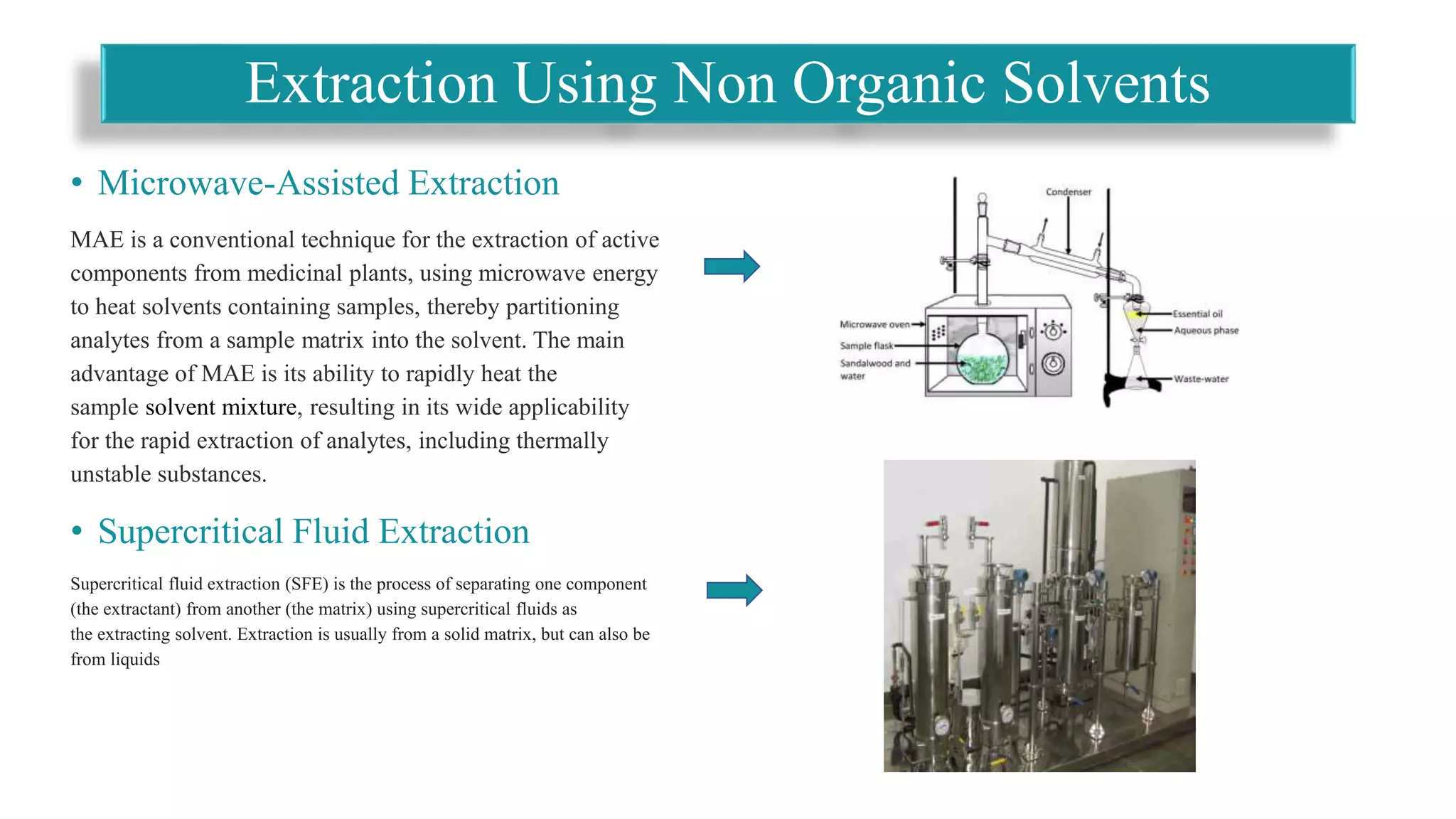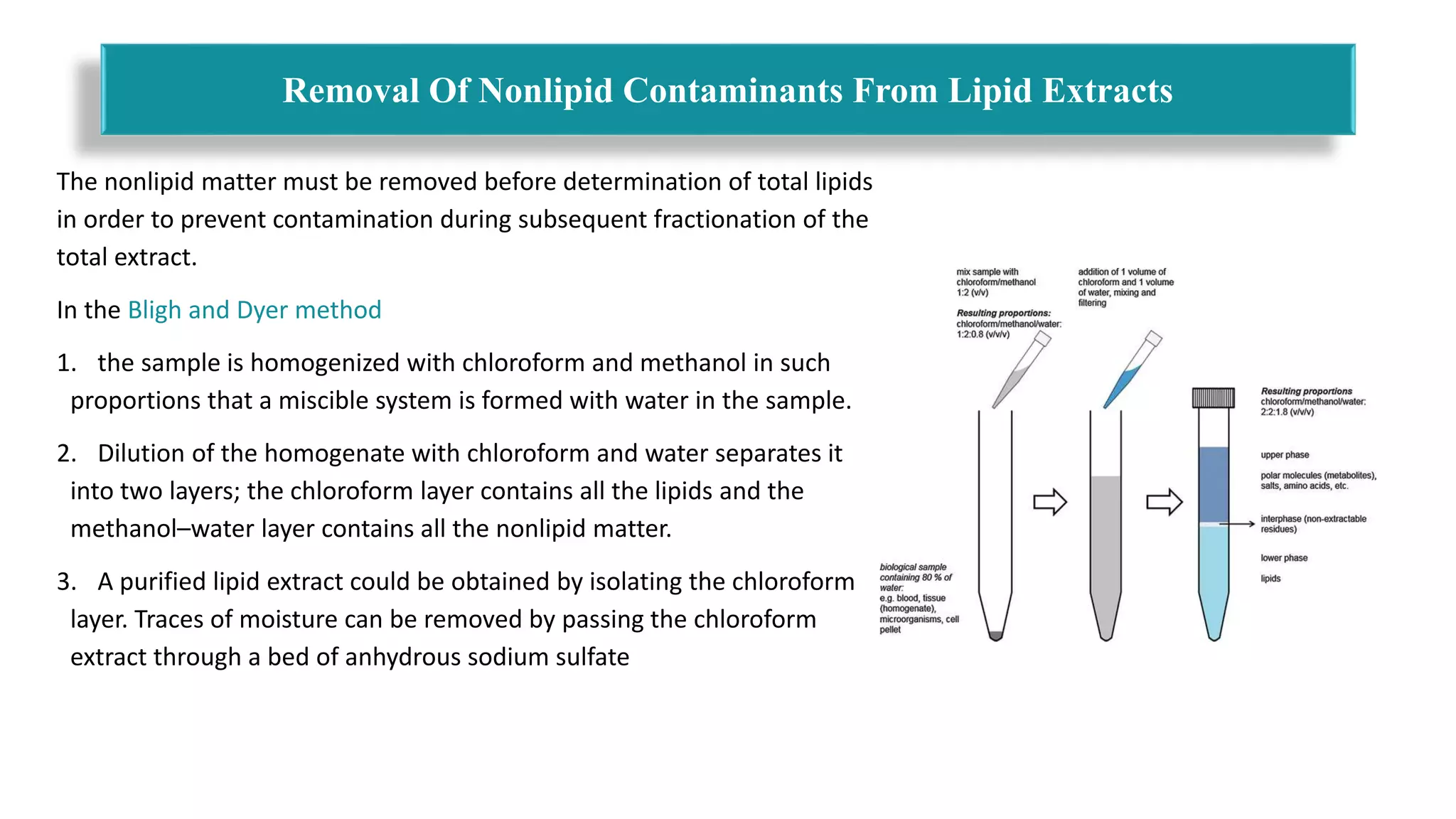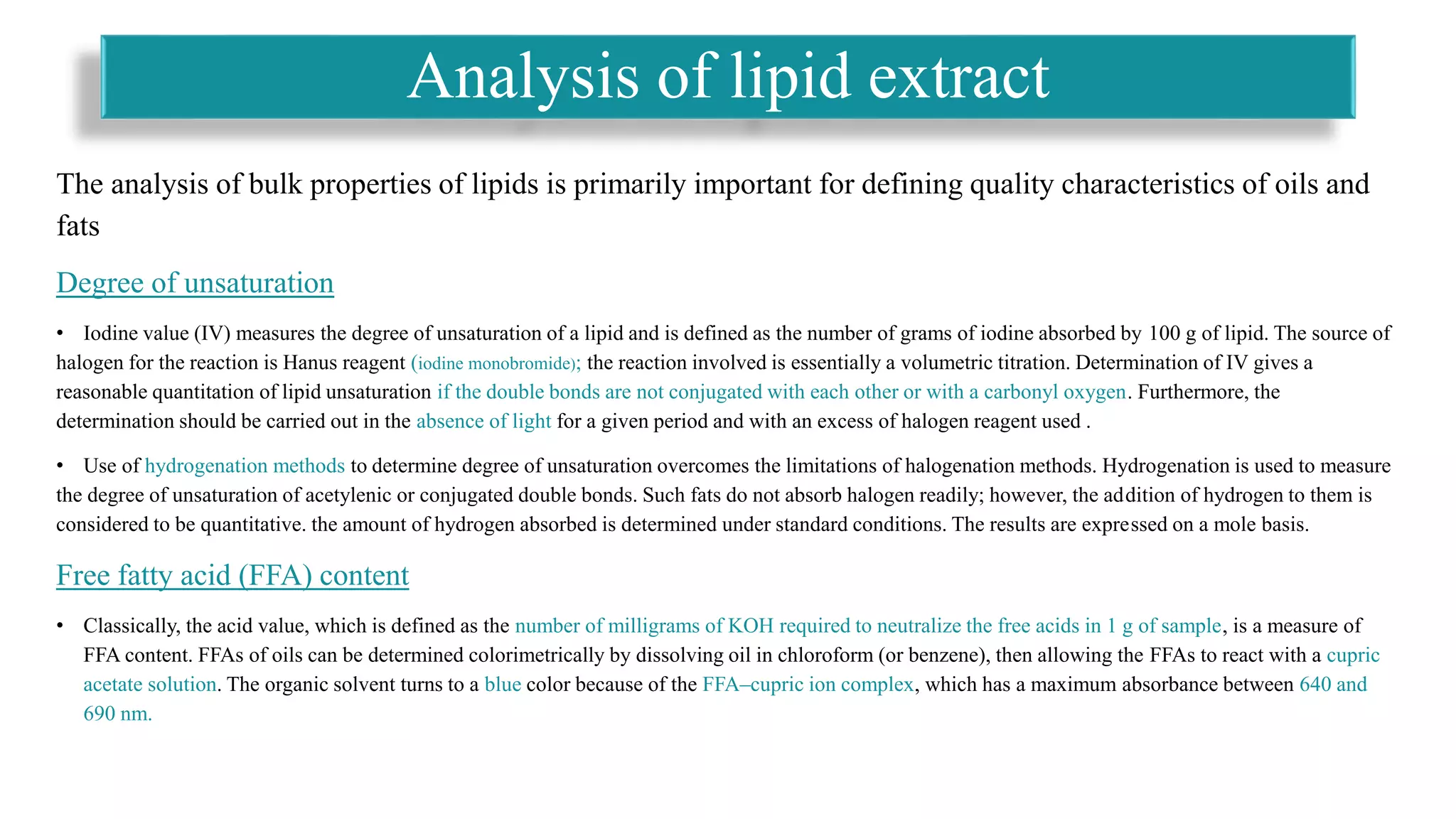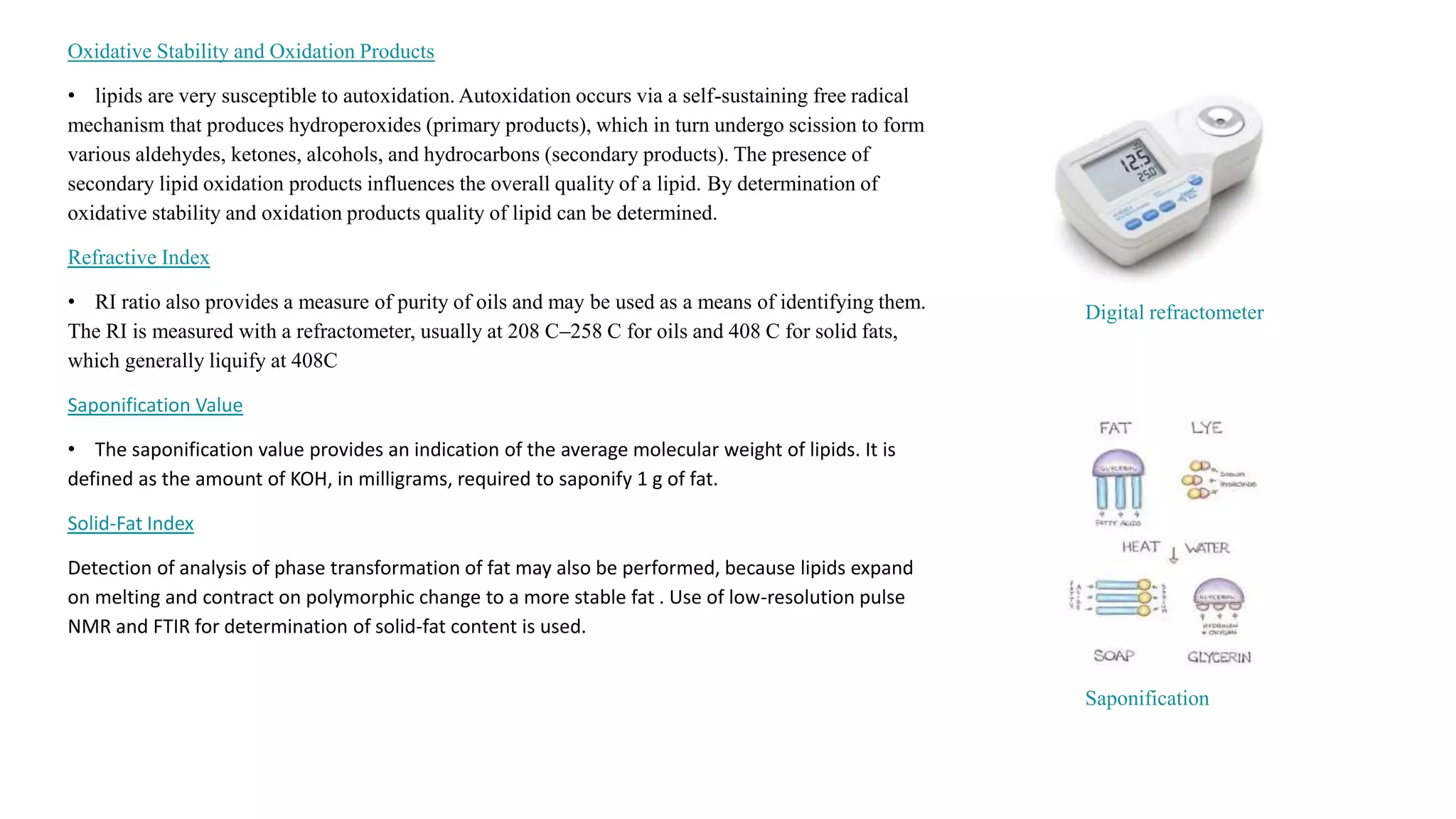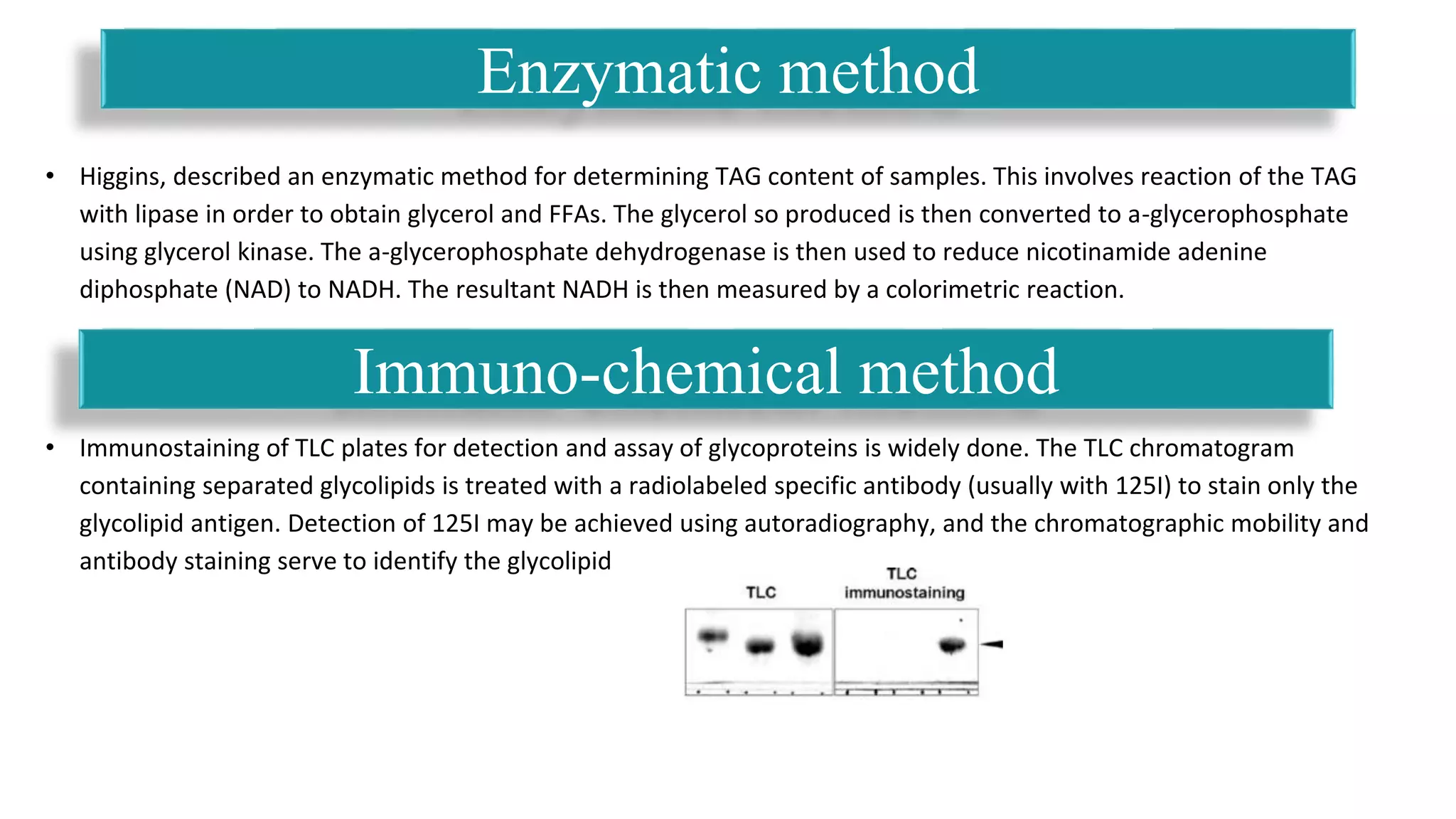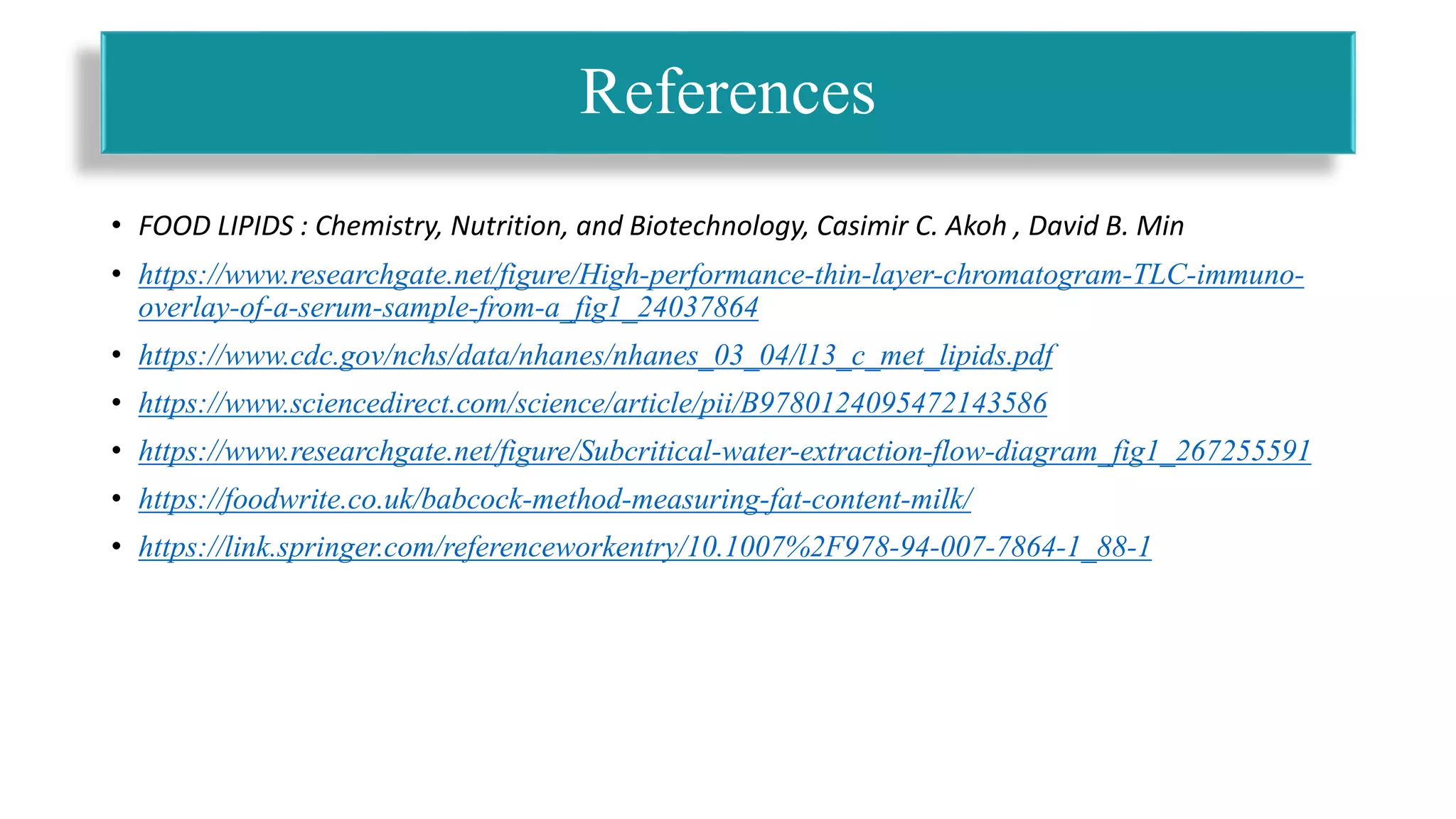The document provides an in-depth classification and analysis of lipids based on various properties such as polarity, physical state, and essentiality for humans. It discusses methods for lipid extraction from tissues, including solvent extraction, microwave-assisted extraction, and physical methods, along with precautions for sample storage and analysis of lipid properties. It also covers the assessment of lipid quality through various analytical techniques and their importance in food chemistry and nutrition.
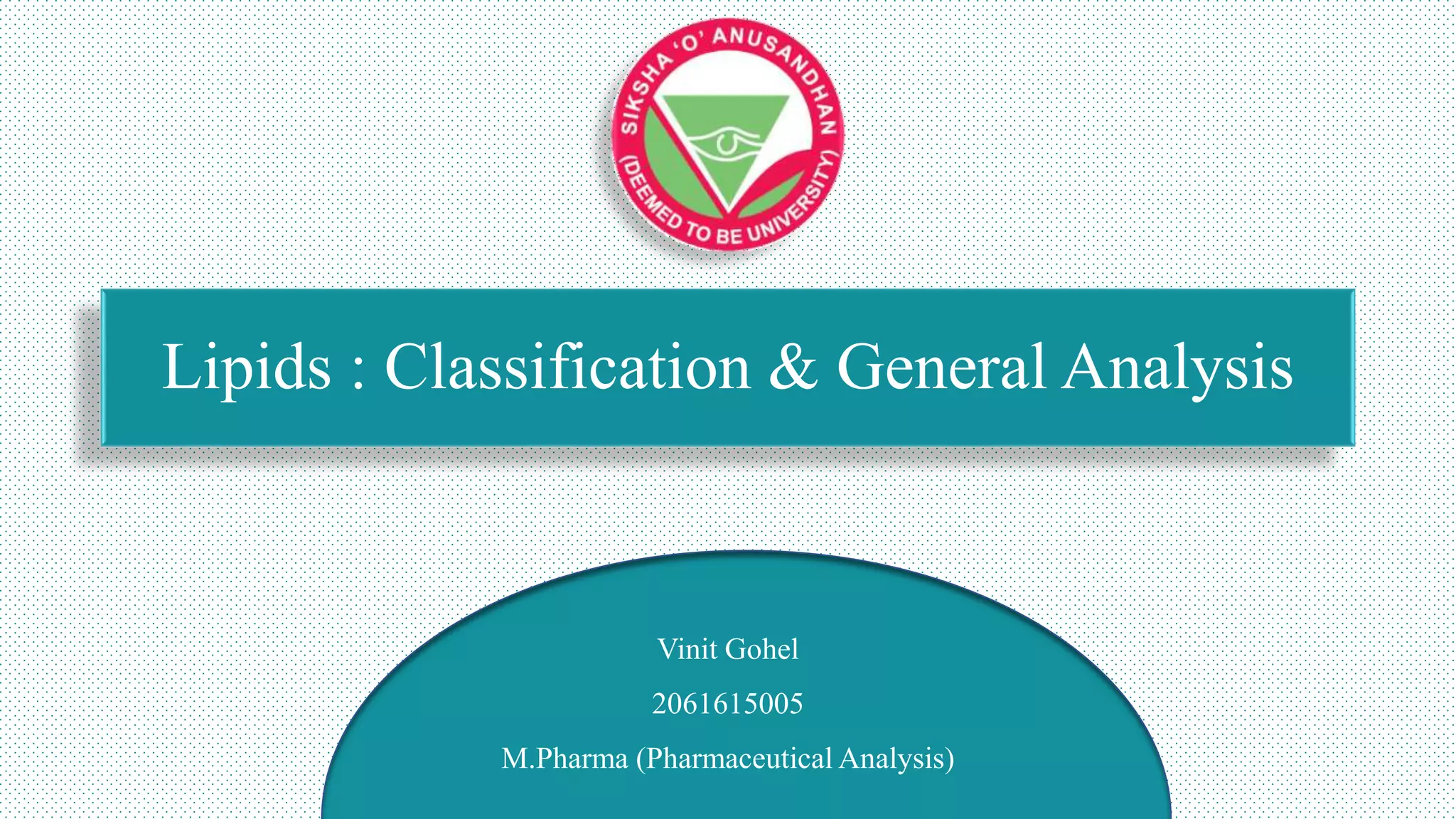
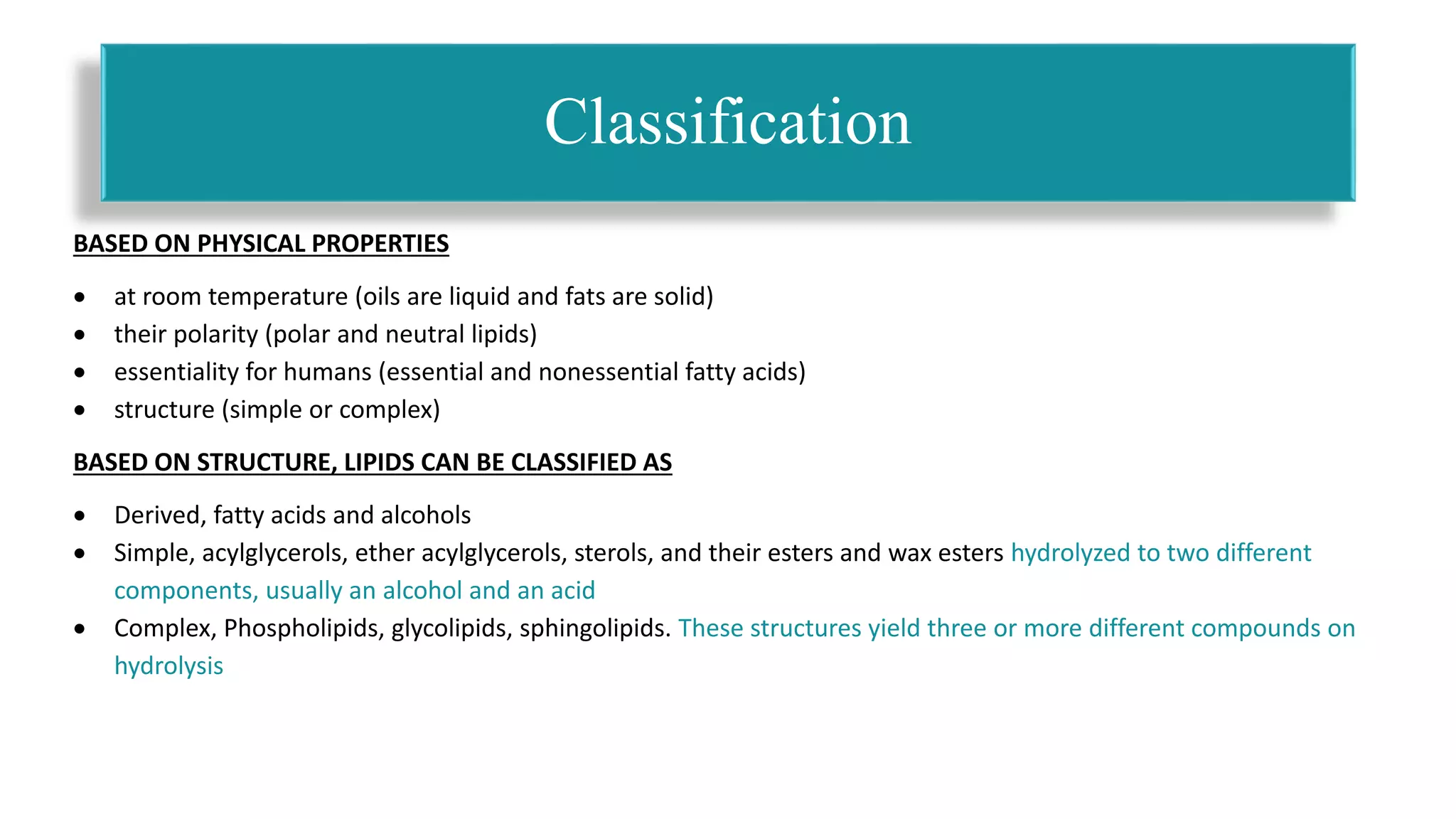
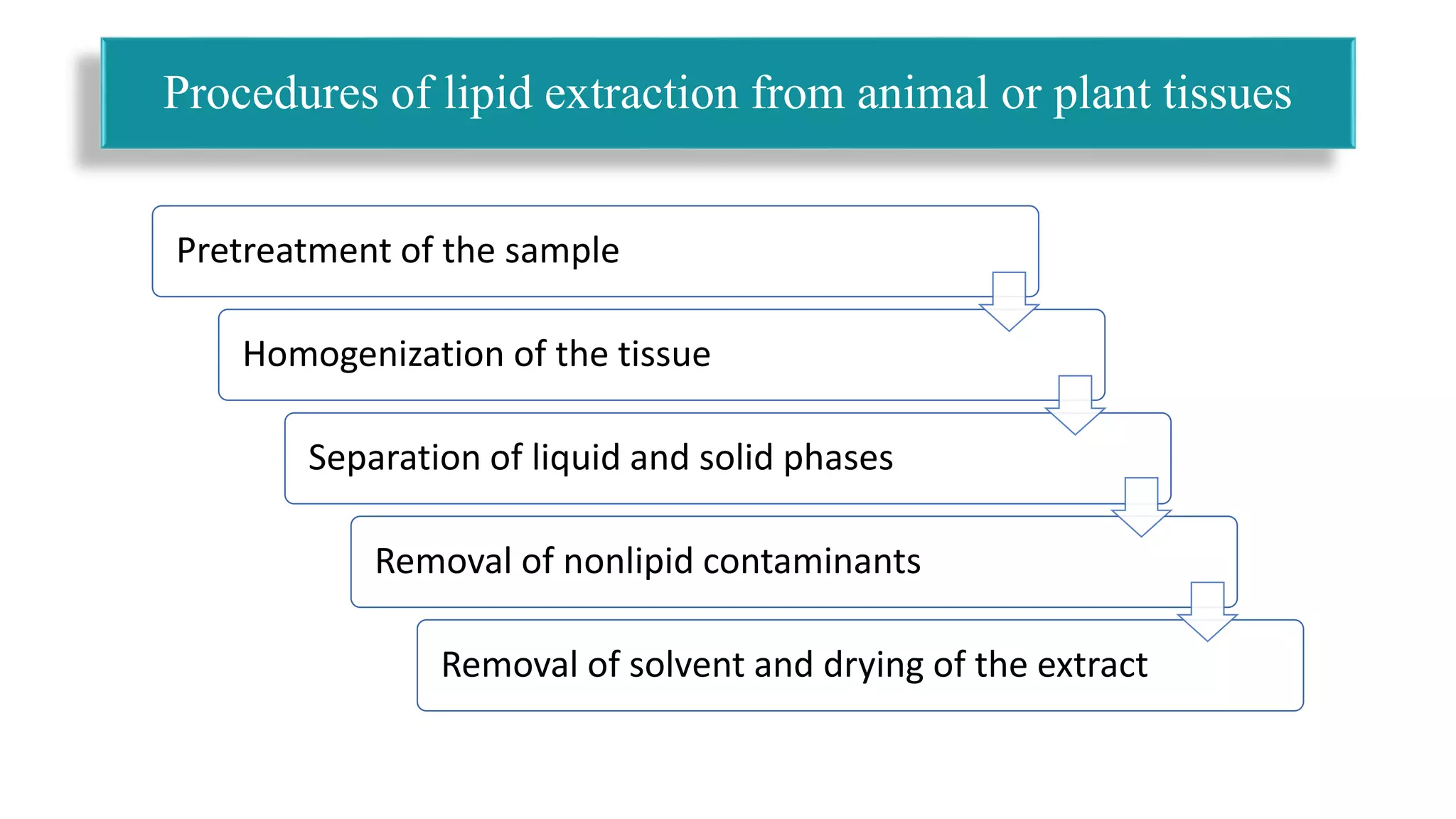

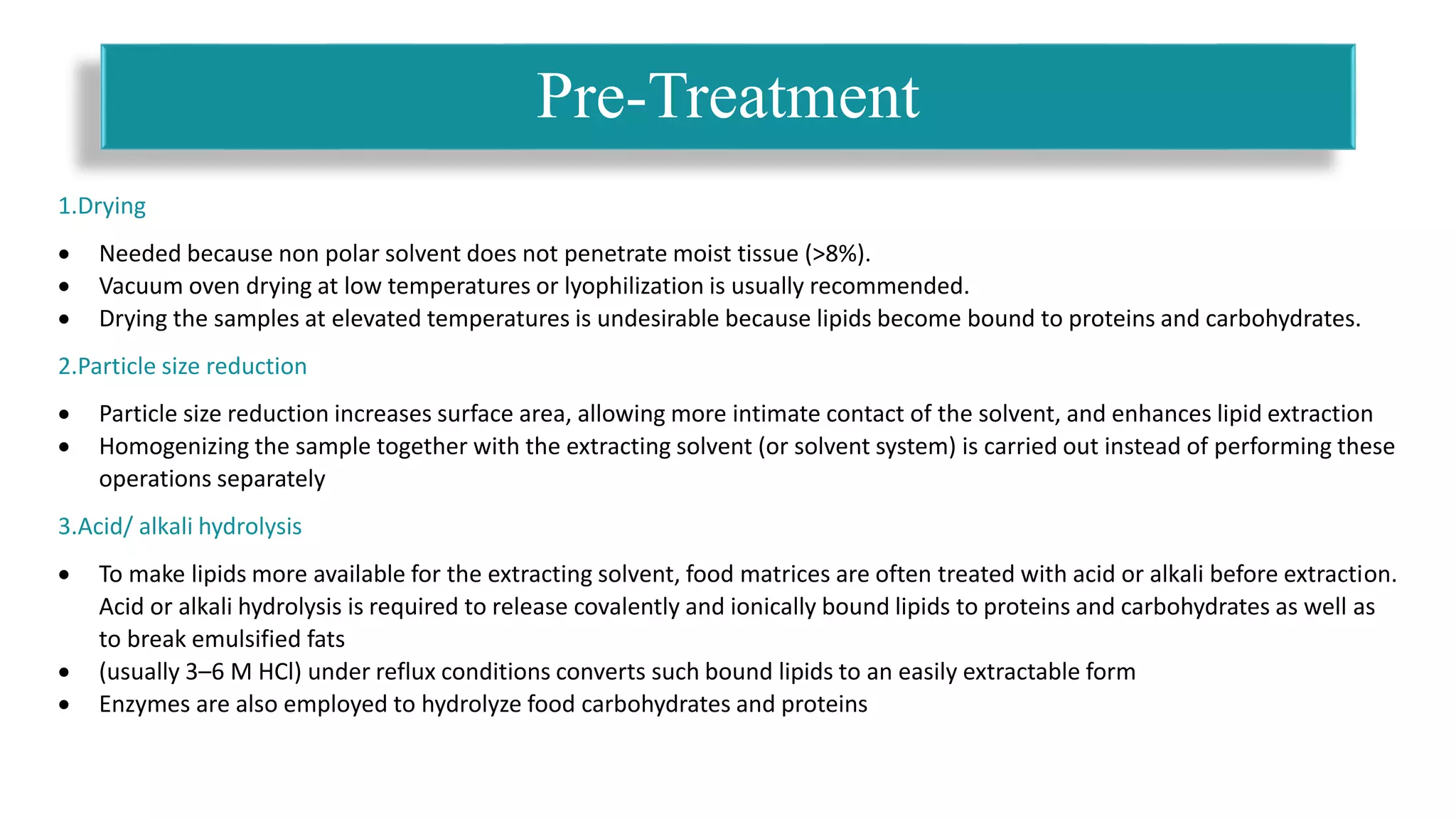
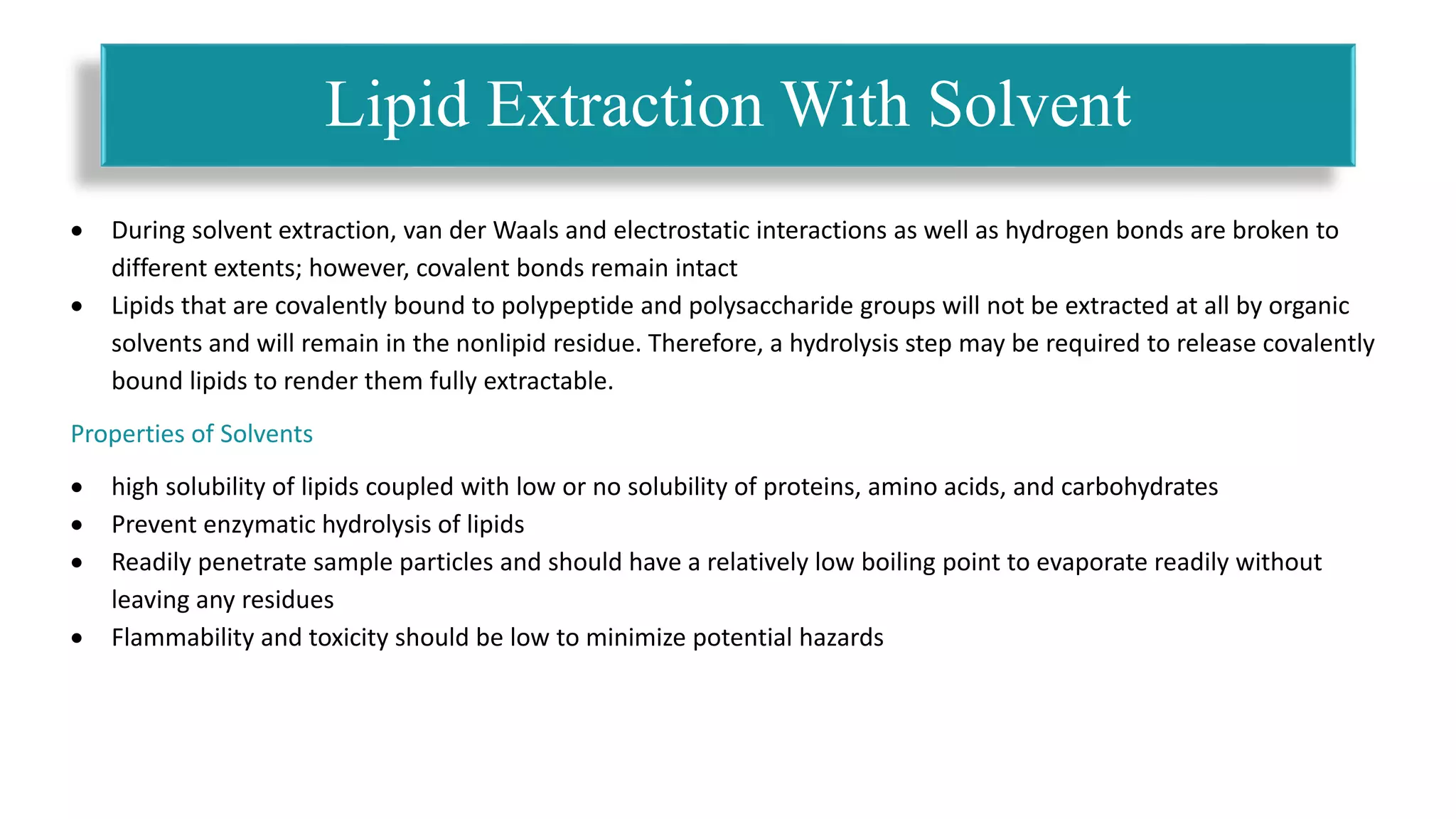
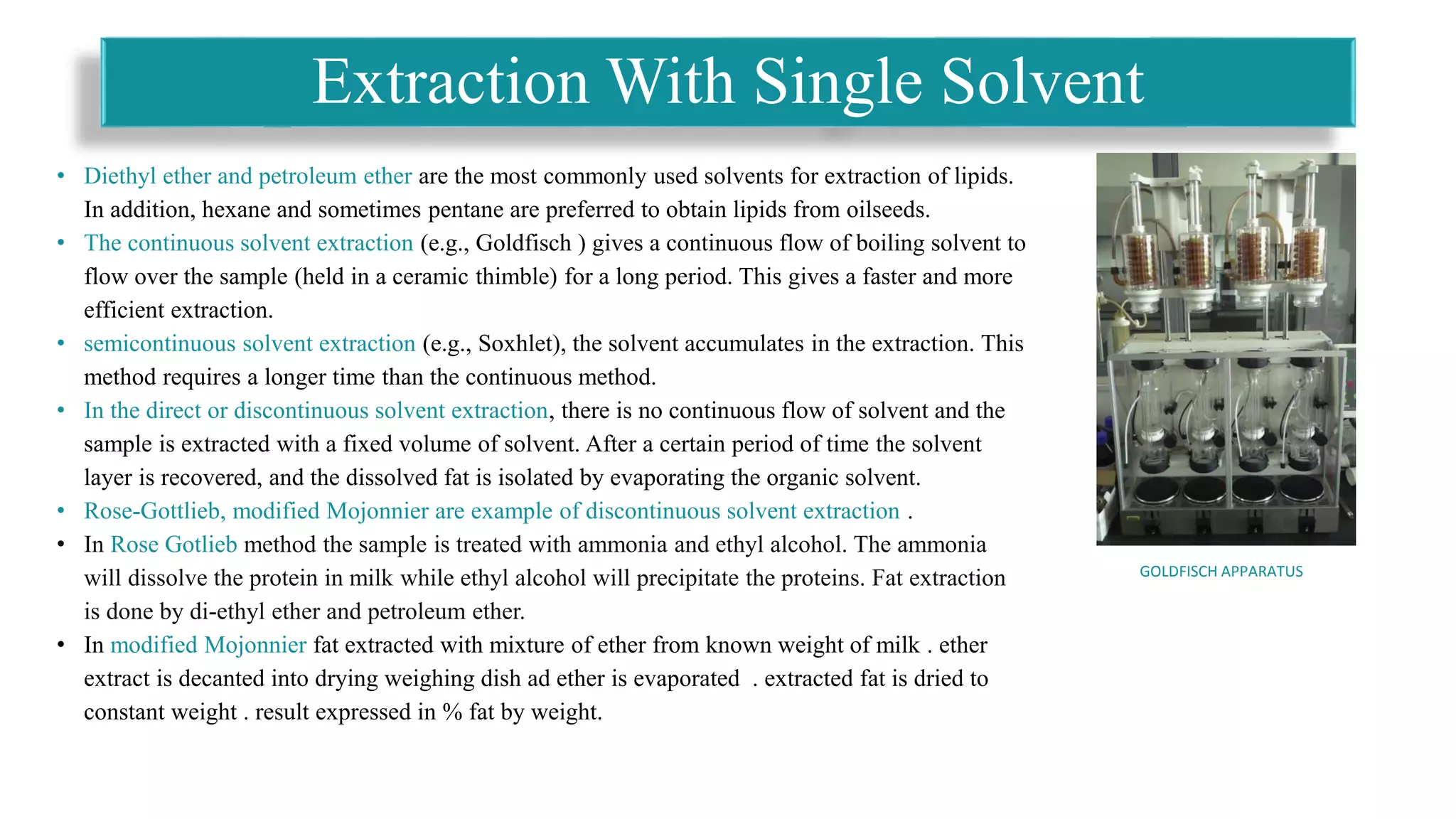
![• Commonly the chloroform–methanol (2:1, v=v) solvent system [10] provides an efficient medium for complete extraction of lipids
from animal, plant, or bacterial tissues. The initial solvent system is binary; during the extraction process, it becomes a ternary system
consisting of chlororform, methanol, and water in various proportions, depending on the moisture content of the sample.
• A typical Folch procedure uses a solvent-to-sample ratio of 2:1 (v=w) with a mixture of chloroform and methanol (2:1, v=v) in a two-
step extraction. The sample is homogenized with the solvent and the resultant mixture is filtered to recover the lipid mixture from the
residue. Repeated extractions are usually carried out, separated by washings with fresh solvent mixtures of a similar composition The
procedure of Folch uses large amounts of sample (40–100 g) and solvents;
• Hence, Lee and coworkers have described a method that uses the same solvent combination, but in different proportions, based on
the anticipated lipid content of the sample. According to this method, chloroform–methanol ratios of 2:1 (v=v) for fatty tissues (>10%
lipid) and 1:2 (v=v) for lean (<2%) tissues are recommended.
• Pressurized fluid extraction (PFE) /pressurized liquid extraction (PLE)/accelerated solvent extraction(ASE) techniques have been
developed to enhance the capabilities of conventional solvent extraction. These techniques use classical solvent systems to extract lipids,
but under varying extraction parameters such as temperature, pressure, and volume. PFE can cut down the solvent consumption by 50%
when compared with conventional methods such as Folch extraction procedure
Extraction using organic solvent combination](https://image.slidesharecdn.com/lipids-210328194848/75/Lipids-Classification-general-analysis-8-2048.jpg)
